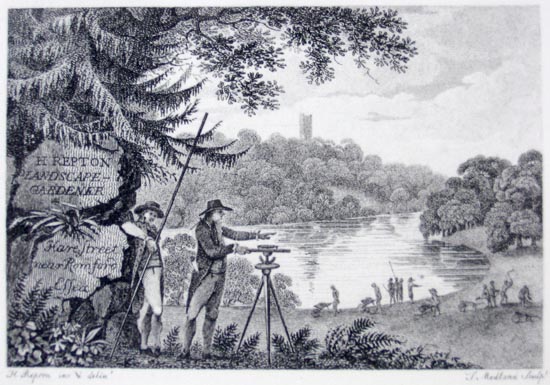HUMPHRY REPTON, Landscape- Gardener
Francisco Martínez Mindeguía
|
|
|
Humphry Repton (1752-1818) is one of the most important landscape designers of the English picturesque movement, contemporary of Durand and Ledoux. This drawing became his signature: a tag that he introduces at the beginning of his books. Apparently, it portrays himself using a topographic level, giving instructions to gardeners who are modifying the terrain. He is a technician, combination of artist and engineer, who designs and controls their work. Repton is a peculiar person. He did not have a stable job until he was 36. In 1788, he decided to become a landscape designer, taking advantage of his social acquaintances and what he had learned up to then. Until he appeared, landscape designing was something done only by dabbler experts, with the exception of William Kent. Landscaping and gardening was a sensitive matter in the British society in the 18th century. It was identified with what was known as the picturesque (poetry). This term lead to many discussions: applied to a literary text, it referred to something intense, but when applied to nature scenes or representations, it meant something whose formal features made it highly suitable for a picturesque representation (painting), something pictured as a balanced image, with shapes, colors, and lights conveniently combined and harmonized. In a general sense, it was a term that designated a particular kind of beauty, which was agreeable as in a picture. The picturesque vision is an aesthetic attitude, result of the empiricism movement, opposed to the classical conception in representation. Both share the idea that nature is a model for roles, but the classical conception searches an ideal model, towards which irregular and imperfect shapes point in nature point. Conversely, the picturesque conception sees beauty in these same irregularities, in the vitality of their own singularity: that is, in their difference. The beauty of the picturesque can be appreciated in the irregularity of a landscape or in the “imperfection” of both popular architecture or old quarters of the cities. Its aesthetic values are irregularity, variety, and even coarseness. If classical order is built from the knowledge of norms, abstractions, and the way they are articulated, the Picturesque is built from direct experience, by the addition of differences integrated in a harmonic group. The order builds universal values and variety is always a subjective construction. The picturesque let us see from images and stimulates the imagination. It emphasizes the visual features at the expense of the rational traits, on one hand, and of the meanings, on the other hand. For this reason, it has been said that picturesque art is the first step towards abstract aesthetic values. It has also been said that the picturesque stage is always the transition between classical art (addressed to reason), and the romantic one (addressed to imagination). Although it was an aesthetic attitude initially, the Picturesque was also identified as a way of understanding life, with political attitudes, and with a specific social model: a beautiful, primitive, and true model, which was unfairly imprisoned by irrational and rigid rules. Thus, it represented values that expressed the spirit of place and the romantic conception of wild nature. Subsequently, it was opposed to regularity, artificial showing off, and absolute monarchy. It was a political group, initially, known as the Country Party, that which started building for their members a series of cottages with wide amusement gardens and fieldworks. They were related to physiocracy and a masonry and radically confronted to conservative leaders, who had the power in London. The feeling towards landscape is a reaction to the city and the rural world’s decadence, and rejects the negative effects of industrialization, preferring the non-polluted to the artificial. Obviously, the vindication of the picturesque is not independent from the changes inflicted by the Industrial Revolution in Great Britain’s landscape since 1760. The great events that took place at the end of the 18th century and at the beginning of the 19th century, set the basis for the social, industrial, and technologic changes of the modern city, and lead to the emergence of a new social class in England: the industrial middle class. This social class defended a trade adapted to the social and political situation at that point, and they proposed a new approach to the world in a more empiric and scientific way. They also advanced a more sensual art, with a better appreciation of details, natural phenomena, animals, plants, water… they proved a will to change the structures of the old regime, which was the seed of the romantic spirit (W. Blake), romantic idea which reacted against reason’s tyranny, since it demanded limited and controlled senses and feelings. One should bear in mind that monarchy’s power in Great Britain was not the same as in France. The 1640 revolution in the UK and the Glorious Revolution in 1688 put an end to absolute monarchy, legitimized by divine right and gave temporary power to the middle classes. When the Declaration of Rights was approved in 1689, the parliamentary (bourgeois) sovereignty became more important than the crown. The parliament appointed a king, ruled the right of succession to the throne, and took the responsibility of foreign affairs. The poetry of the Picturesque represents a way of seeing, reading, contemplating the “landscape,” understood -in a broad sense- as “environment,” affecting all senses, although the first impact seems to be visual. This is known as “picturesque eye” which, in fact, can relate to Michelangelo’s idea that the rule (ruler, proportion) lies in the eye of the beholder or even with Vasari’s idea that the artist must know the rules, but perfection is only achieved when such rules or limits are transgressed. Bernini spoke also about the relevance of having a good eye to appreciate contrasts, since the beauty of things depends not only on the things themselves, but also on what surrounds them, the environment in which they are. All these appreciations point out the importance of perception and the personal and individual interpretation of the artwork. It recognizes the relevance of subjectivity, the individual, and it assigns the responsibility of appreciating what is right and what is not, in detriment of universal norms. Obviously, this is in conflict with absolute powers, either the monarchy or the church, as a way of thinking and conducting oneself. Humphry Repton (1752-1818) was one of the most important garden designers in Great Britain, and a follower of Capability Brown. In order to convince his clients, Repton did a series of explanatory drawings and texts, which he bounded together most of the times in red skin covers; that is why these books are known as the Red Books. Taking advantage of his watercolor skills, he portrayed in these drawings landscapes with superimposed mobile parts which showed the before and after of the transformation. |
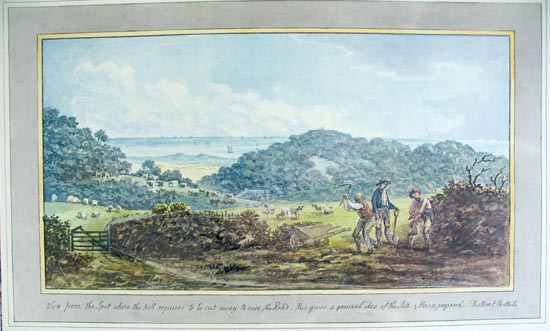 |
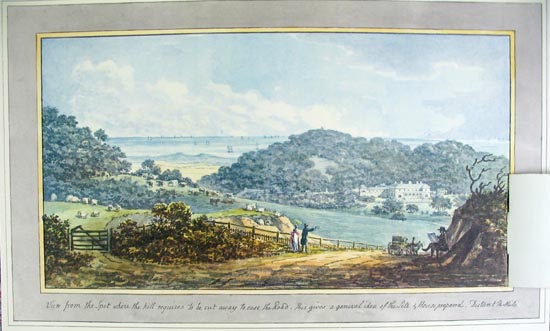 |
| Other examples: a cottage in Blaize Castle, |
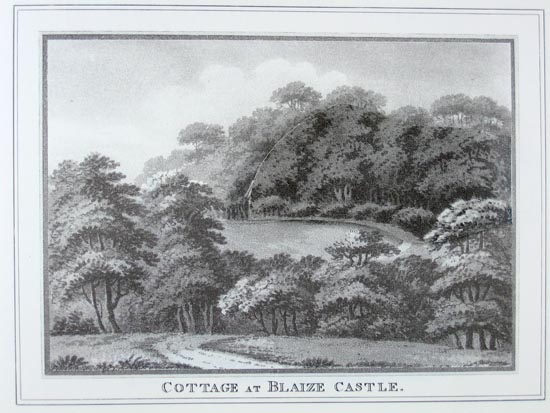 |
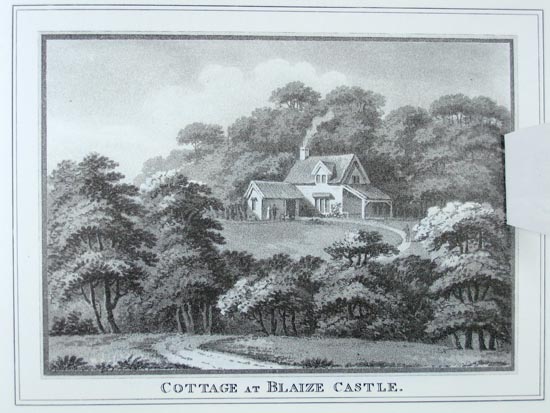 |
| Access to a cottage, |
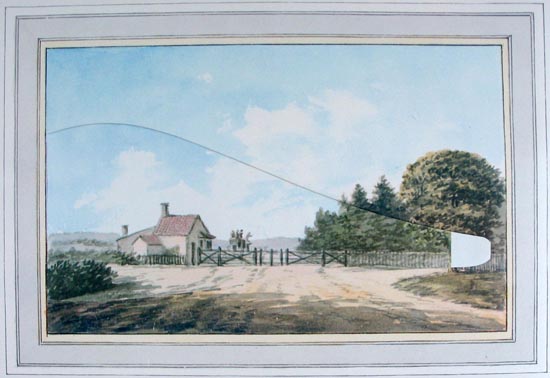 |
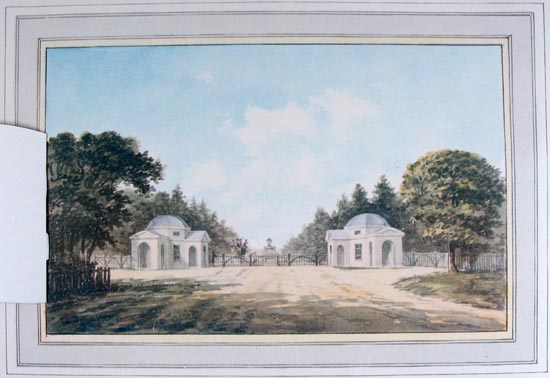 |
|
|
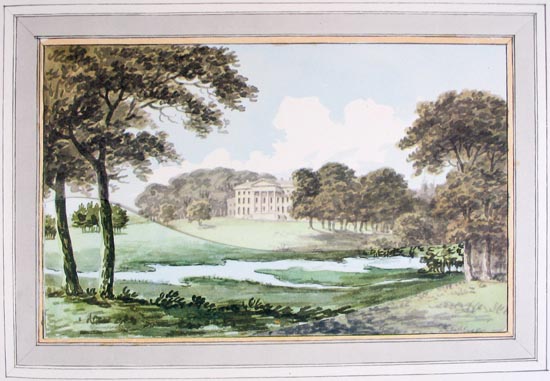 |
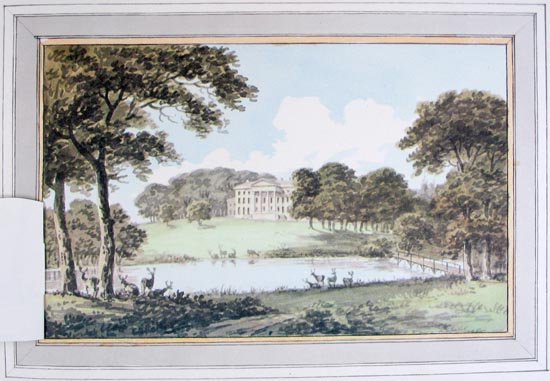 |
| These are images that remind us of some paintings, such as Claude Lorraine’s, |
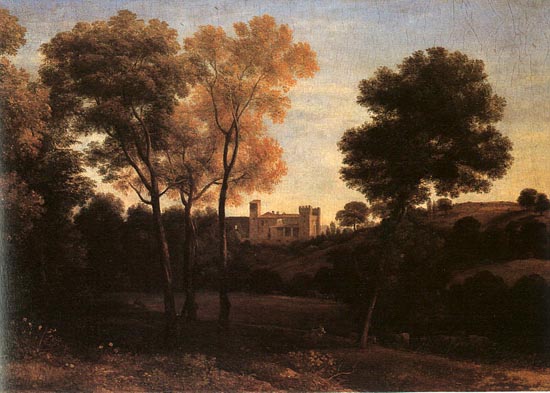 |
| Claude Lorrain (1600-1682) is often considered as an important reference source of this style. His landscapes are filled with feeling: a golden light of nightfall, views framed by the dark shadows of big rocks and trees, small human shapes on a side, peaceful images, far away horizons…Lorrain was very successful in Great Britain, especially after the publication of the book Liber Veritatis (Book of Truth), in 1777, which contained 195 engravings of Lorrain’s works. It is a book of drawings that Lorrain started in 1634; where he stated his authorship in order to avoid forgeries. |
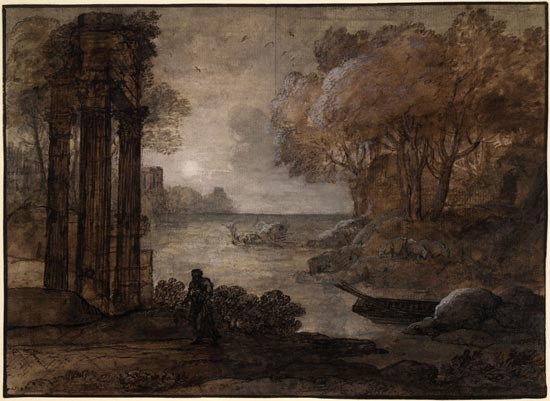 |
|
The relevance that the sense of sight has in this project makes the perspective projection more important than the plan, which reproduces the image intended. But this already happened in the representation of the Renaissance, in the Baroque, and even in French gardens. But this is how perspective projections are built with a high point of view in the latter cases, it is a bird’s-eye view in order to see the geometry of the planning. The image of this landscape is a perspective from a real place, as farther away as the mountain in front. Most of the times they are watercolors, and other times, oil paintings. Repton avoided drawing perfection as defended by Academies. He used to do simple, imperfect, and unfinished-looking drawings. They seemed quick drawings, as if the artist’s hand were transparent, the “human” trait that was lost in the industrial revolution. The following is a watercolor drawing by Humphry Repton, |
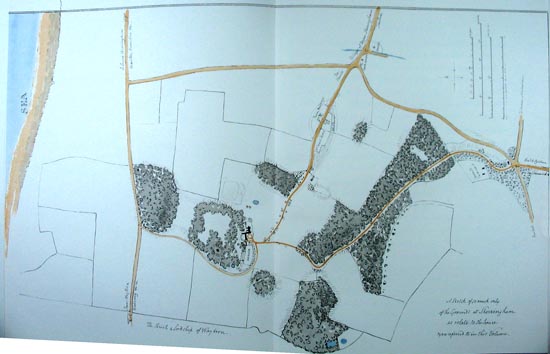 |
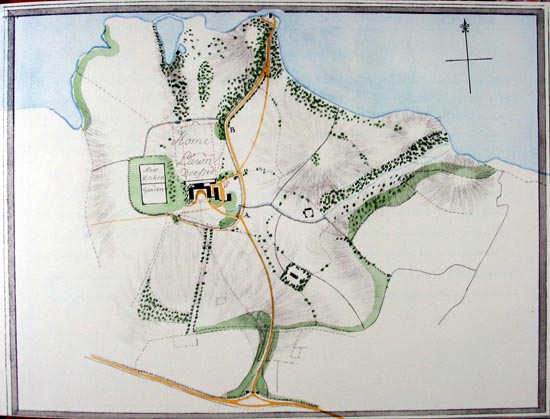 |
| Another composition made of superimposed sheets of paper representing the state, before and after the intervention, |
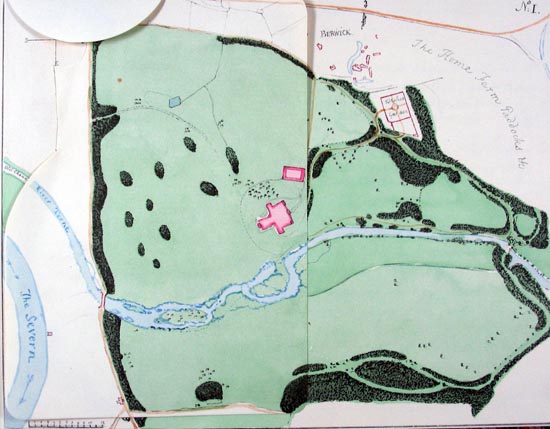 |
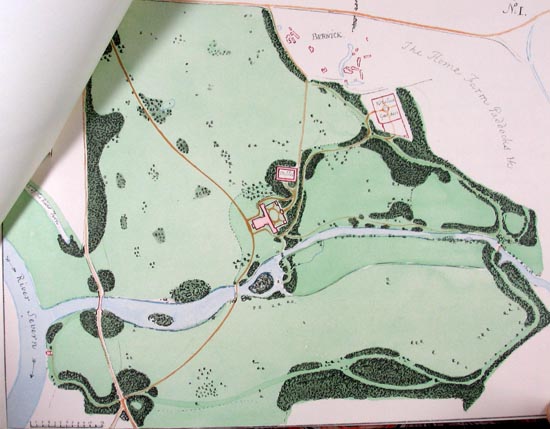 |
| The Picturesque rejects the idea of perfection (as that which cannot be improved), instead, it is a coarseness which should not be mistaken with inexperience or lack of interest, since it always hides a deep study of site and its surroundings. A clear example is Humphry Repton’s. His red books have the character of artist’s works, which he used to hand to his clients with his watercolor drawings and hand-written texts. The following is a justification of the project, |
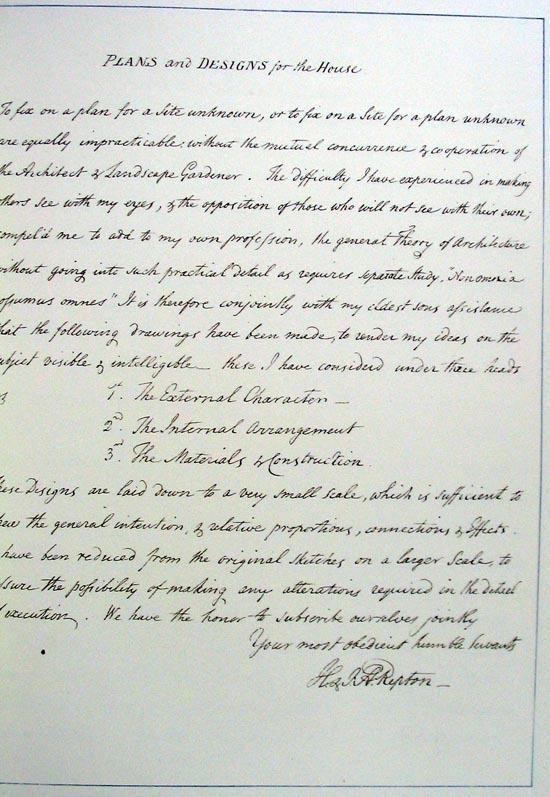 |
| But in his theory books there are drawings such as the following one, in which he analyses the visual fields, |
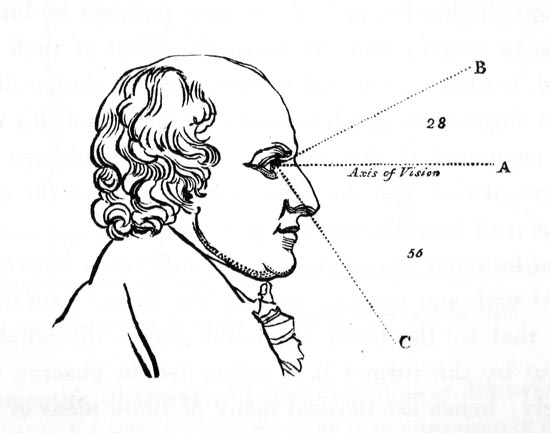 |
| Variations in landscape perception, depending on the location of the observation point |
 |
| The landscape was a material construction that had to be known. |
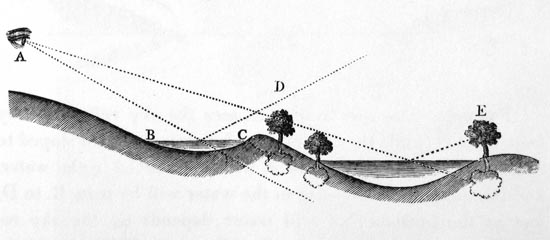 |
| In other drawings, he highlights how the perception of the landscape changes from inside the building. |
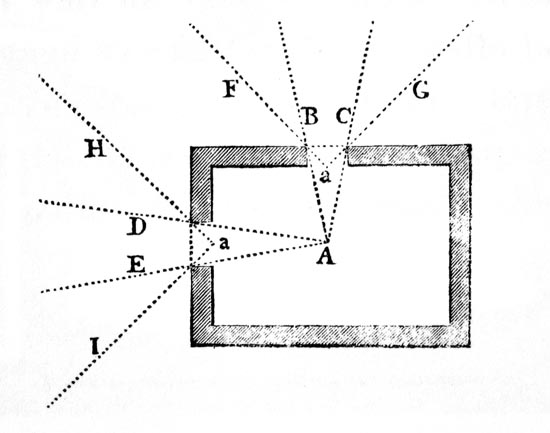 |
|
|
Recommended bibliography:
- Humphry Repton, Observations on the theory
and practice of Landscape Gardening, 1803 (facsímil, Oxford,
Phaidon, 1980)
- Humphry Repton, The Red books, 1812,
1792, 1798 (facsímil, London, Basilisk Press, 1976, 4 vols)
- Christopher Hussey, The Picturesque: Studies
in a Point of View, London, Putnam, 1927
- Walter John Hipple, Jr., "The beautiful, The Sublime & The
Picturesque in Eighteenth-Century British Aesthetic Theory", Carbondale,
The Southern Illinois University Press, 1957 (1987)
- Raffaele Milani, Il Pittoresco. L'evoluzione
del Gusto tra classico e romanico, Rome, Editori Laterza, 1997
- Raffaele Milani, L'arte del paesaggio,
Bologna, Il Mulino, 2001
- Parametro,
nº 264-265, año XXXVI, July - October 2006
© of the text Francisco Martínez Mindeguía
© of the English translation Ruth Costa Alonso, Francisco Martínez Mindeguía, and Antonio Millán.
>> Back to the top of the page
>> Back to Dibujos Ejemplares de Arquitectura
